Coloring Books: The New Therapy?
Posted by 3five Support on

Coloring books have undeniable benefits for adults. They can be used to reduce stress, boost focus, and increase mindfulness. Coloring books can also help to inspire imaginative thinking or work through a creative block. They can even be used to enhance a meditation practice. Coloring books for adults have quickly grown in popularity because they’re effective in helping adults manage everyday issues and unleash their creativity. However, there’s still some speculation about the use of adult coloring books to treat more severe conditions like anxiety, depression, or even addiction.
The psychology community is divided about the effectiveness of adult coloring books for patients seeking art therapy or creative treatment alternatives. They’re hesitant to tout the benefits of this art form as a mode of treatment. In fact, some therapists have called into question whether a coloring book should even be considered a form of artistic expression.
Art Therapy versus Art as Therapy
Before examining the opposing sides and contention within the psychology community regarding adult coloring books as a form of treatment, it’s vital to understand the distinction between art therapy and art as therapy. According to the American Art Therapy Association, art therapy is defined as “a mental health profession in which clients, facilitated by an art therapist, use art media, the creative process, and the resulting artwork to explore their feelings, reconcile emotional conflicts, foster self-awareness, manage behavior and addictions, develop social skills, improve reality orientation, reduce anxiety, and increase self-esteem.” Conversely, Creative Arts Therapist Alissa Zemering defines art as therapy as “a practice of using art to create a sense of calm, relaxation, or meditative state.” She goes on to clarify that “art as therapy can be successful individually or with others and does not require a professional to facilitate or assess the creative process.”
Based solely on these definitions of art therapy and art as therapy, you could argue that art therapy is merely a very narrow and specific form of art as therapy. It’s easy to see how a patient with a more severe condition like anxiety, depression, or addiction could benefit more from art therapy under the supervision of a licensed professional. Even so, does this mean that art as therapy should be dismissed as ineffective?
The debate gets more complex once you go beyond the basic definitions and delve deeper into the practices and the specific responses in the brain and body. According to Cathy Malchiodi, an art therapist who adamantly opposes the use of adult coloring books in her practice, “art therapy is not only based in creative visual expression, it is rooted within a relationship. It is the right-hemisphere-to-right-hemisphere, attuned, sensory-based, embodied and reflexive convergence aspects of the art therapy relationship that support art’s reparative powers.” Her explanation shows that art therapy work is rooted in the right side of the brain. This hemisphere is dominant for attributes like intuition, creativity, and emotion, so it makes sense that art therapy could be used to treat issues like emotional trauma or emotional conflicts. By allowing the left hemisphere – the more logical or analytical side of the brain – to remain more stagnant or disengaged in the process of art therapy, patients are able to better focus on their emotions without over analyzing or systematizing them.
On the other hand, using a coloring book has a different impact in the brain. When using a coloring book, different areas of the two cerebral hemispheres are activated. Psychologist Gloria Martinez Ayala explains that “the action involves both logic, by which we color forms, and creativity, when mixing and matching colors. This incorporates the areas of the cerebral cortex involved in vision and fine motor skills.” By engaging both the left and right hemispheres of the brain, a coloring book serves a different purpose. It creates a balance between structure and creative freedom by providing a framework for self-expression.
Creating Original Art versus Coloring
In addition to considering the differences in the physical responses in the brain, it’s important to explore the differences in the practice of creating original art in art therapy compared to using a coloring book. When creating original art, you start with a blank page or canvas and create original art from scratch. This process is necessary in an art therapy setting because it can “help the client reveal repressed feelings, emotions, or thoughts” and “be used as a tool to help the therapist and the client better understand a problem that may be too difficult to verbalize,” according to Zemering.
Once again, using a coloring book serves a different therapeutic purpose. Because of that perfect balance of structure and creative freedom that a coloring book provides, this method can help a person release critical or judgmental thoughts and feelings that can make the creative process a negative experience. “When working with a coloring book, the client’s fear of their work turning out ugly or not good enough is greatly reduced. There is some kind of framework, which makes the process less stressful and more enjoyable,” says Zemering. This is why coloring books are a great way reduce stress and boost relaxation and a sense of calm.
Using Coloring Books as a Form of Creative Self-Expression
Creating original art in art therapy and using a coloring book each have their own unique therapeutic benefits, but both art forms involve a key aspect: creative self-expression. Creative self-expression is crucial to the therapeutic process because it allows clients to release internal thoughts and feelings. Whether a person needs to release bottled up energy from stress or stifled creative energy, allowing these things to flow through them and onto the page can help them feel more relaxed or fulfilled.
Creatively expressing yourself using any art form has the potential to enhance your well-being, but accepting the use of a coloring book as a form of creative self-expression is another point of contention in the psychology community. Malchiodi believes that using a coloring book is “a far different experience from authentic creative expression,” and that therapeutic benefits are only achieved through “actual art making.” On the other hand, Zemering argues that coloring books can be a form of creative self-expression. She asserts that aspects of using a coloring book like “having the choice of using all different types of colors, designs, and art mediums, such as colored pencils, gel pens, and markers, can assist a person in their creative self-expression.” Despite the differing opinions within the therapeutic community, the experience of feeling creatively self-expressed ultimately lies within the creator themselves.
Focusing on the Process of Creating, Not the Product
Another key aspect of using art for therapeutic purposes is focusing on the process of creating, not the product. Today’s society tends to focus too much on the end product, the goals, and the results. This mentality has stripped us of finding fulfillment in or simply enjoying the process. More importantly, it has misguided us in believing the process isn’t important when, in fact, a good process is essential to a good product. Ultimately, a good process often results in success.
The goal in both art therapy and art as therapy is to focus on the process of creating. Critical, analytical, or judgmental thoughts are the biggest factors that can hinder the process of creating. If a person begins to fear whether or not their end product will be nice or pretty, they’ll lose the joy and fulfillment in the process of creating.
Coloring books aid in focusing on the process instead of the product because of the structure they provide. This framework helps to reduce the pressure or stress around how the end product will turn out. They allow a person to creatively express themself in a safe space, which makes the process more freeing and gratifying. As a result, the process will inherently come more easily and ultimately, a person be more satisfied with their end product because they enjoyed the journey along the way.
Who Can Experience the Therapeutic Benefits of Coloring Books?
There are a wide array of populations who can experience the therapeutic benefits of coloring books. Depending on the specific issues or needs a person may have, they will experience different results while using coloring books as part of their routine and therapeutic practice. A coloring book can even be used for alternative purposes, like enhancing a meditation practice.
For people who regularly experience stress or anxiety, coloring books can help them to feel more calm and at ease. “The relaxation that [coloring books] provide lowers the activity of the amygdala, a basic part of our brain involved in controlling emotion that is affected by stress,” says Ayala. The science behind coloring books eliciting a more peaceful mindset goes beyond the impact on the brain. Dr. Stan Rodski, a neuropsychologist, conducted a study using advanced technology, which showed both changes in brainwaves and changes in heart rate of participants while coloring.
The proof in the power of coloring is not only backed up by science but also affirmed through the experience and testimonies of real people. An article from The Guardian chronicles a 52-year old woman whose doctor was concerned about her blood pressure. When her doctor asked about any changes in her life or habits, she mentioned she’d recently been experiencing anxiety about her job. After establishing a routine of using a coloring book to unwind at night, she reported feeling more relaxed and sleeping better. Then, when she returned to the doctor, her blood pressure reading had improved.
The benefits of coloring books are not just for the 24% of American adults who report they experience “extreme stress,” according to a 2015 survey by the American Psychological Association. Coloring books can be used to increase fine motor coordination in stroke victims and adults with autism. They can help to boost cognition in stroke victims and geriatrics. Even patients recovering from addiction can use coloring books as a new leisure activity and source of relaxation.
The Best Coloring Books for Stress and Anxiety
Some of the most successful results come from those who use mandala coloring books. Mandalas are one of the oldest documented art forms in the world and are found across a variety of cultures. The word mandala means circle in Sanskrit, but they are more than just a circle because of their intricate details, often comprised of a concentric circular pattern.
There are many studies that show the benefits of creating within a circular form. In one of the first studies to investigate the anxiety-reducing benefits of coloring books, Nancy A. Curry and her mentor, Professor of Psychology Tim Kasser, PhD, studied 84 undergraduate students who were randomly assigned to color a mandala, to color a plaid form, or to color on a blank piece of paper. The results demonstrated that anxiety levels declined for both the mandala and plaid coloring groups and that both of these groups experienced a greater reduction in anxiety than the participants with the blank piece of paper. These findings suggest that structured coloring of a reasonably complex geometric pattern may induce a meditative state that benefits individuals suffering from anxiety.
How to Boost the Therapeutic Benefits of Using a Coloring Book
While using a coloring book, a person can transcend into a meditative state, or they can specifically use a coloring book to enhance their meditation practice. The difference between using a coloring book to induce a meditative state and more customary forms of meditation is in the process. Instead of a more traditional approach, which involves being in a seated position with eyes closed in silence, a coloring book allows a person to move and get more creative.
Listening to music while using a coloring book is one way to boost the therapeutic benefits. Music has been found to enhance the effectiveness of a variety of activities. It has shown to enrich cognitive performance and help people study more efficiently. Listening to music while reading is believed to impact comprehension. Even paring specific types of music and wine has shown to enhance the palate and taste buds.
Similarly, listening to music while using a coloring book can help a person to relax, unwind, or even shift into a meditative state. Just as a coloring book can help to decrease stress and anxiety, music has also shown to make people feel more calm and at ease. With music’s ability to enhance cognitive function, playing music while using a coloring book can also help to bolster a person’s creativity.
Using a coloring book with others is another way to boost the therapeutic benefits. At first glance, coloring may seem like a solo activity, but it’s possible to make coloring communal. “Coloring with other people can create a sense of belonging and reduce feelings of loneliness,” says Zemering. Using a coloring book with friends or family is also a great way to connect and build stronger bonds and relationships.
Can Coloring Books be Used as a Form of Art Therapy?
When it comes to more severe conditions like depression or addiction, the psychology community is divided on the effectiveness of coloring books. One of the major points of contention is the difference between creating original art and creating within the framework of a page in a coloring book. Another aspect of the debate centralizes around whether a coloring book can be used as a form of creative self-expression, which is essential to the therapeutic process. Finally, the community has differing viewpoints on how coloring books fit into the primary goal of art therapy: focusing on the process of creating as opposed to the end product.
It’s undeniable that there is only so much imaginative thinking that can be used on a page that’s already designed for you, like those in a coloring book. However, studies have shown that people who participate in structured coloring experienced a greater reduction in anxiety than the participants with a blank piece of paper. Aspects of using a coloring book, like color selection, can support creative self-expression. The same framework that helps to reduce stress and tension allows a person to creatively express themselves in a safe space, which makes the process more freeing and shifts the focus from the end product.
The final piece of the puzzle is this: can the creative self-expression experienced while using a coloring book lead to self-discovery or greater insight into one’s self? The answer is tricky. Just like examining whether or not a coloring book can be used as a form of creative self-expression, the result is subjective and ultimately lies in the creator themselves. Zemering suggests that “using a coloring book to promote expression for insight into one’s self could be considered art therapy,” but she’s still somewhat skeptical about the impact being as powerful without the oversight and guidance from a licensed professional.
Explore the Therapeutic Powers of the Coloring Book
Coloring books have clear therapeutic benefits for adults. One of the proven and most effective applications is to help combat stress and anxiety. Coloring books can also help to bolster cognition or the imagination. They can even help to induce a meditative state. Coloring books are undoubtedly an effective way for adults to manage everyday tension and worry or to work through a creative block.
Whether or not a coloring book can be used as a form of art therapy is subjective, but regardless, a coloring book can be used for therapeutic purposes. Coloring books have rapidly gained popularity among adults because there’s substantial evidence showing their effectiveness in coping with some of the most common and widespread issues facing adults today. Ultimately, the therapeutic power of the coloring book lies in the experience you have while coloring. So, grab a book of mandalas and a set of colored pencils, gel pens, or markers, and explore the therapeutic powers of the coloring book for yourself!

Source:
Alissa Zemering, MA, ATR-LCAT is a licensed and registered Creative Arts Therapist born and raised on Long Island, NY and currently resides in Boca Raton, FL. Zemering received a Bachelor's of Science in Psychology Cum Laude at the University of Hartford. She received a Master's of Arts at Hofstra University in Creative Arts Therapy.
Zemering's mission is to provide a life of fulfillment to individuals that have compromised health and mental health conditions by incorporating and utilizing a variety of modalities including the arts, technologies, and the local community to enhance the quality of life.
Check Out Alissa's Work:
Pinterest: @AlissaArts-CreateIt
Instagram: @mysparklingheart
LinkedIn: Alissa Zemering
SPECIAL OFFER!!
We want you to put your mental wellness first, which is why we are offering you 10% OFF all coloring books! Use coupon code ARTTHERAPY at checkout.
Share this post
8 comments
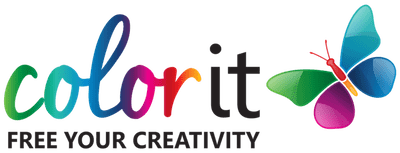
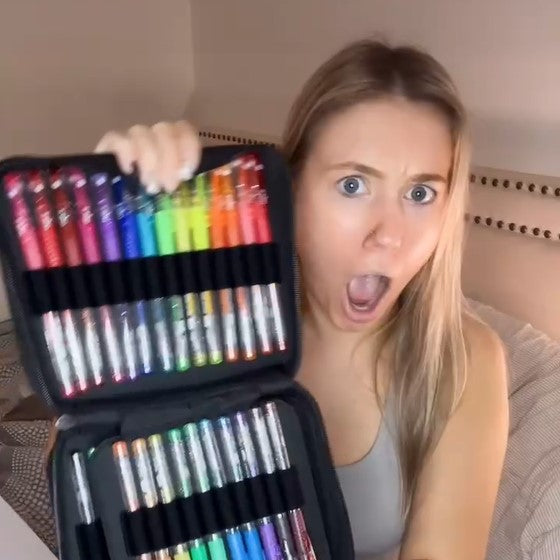
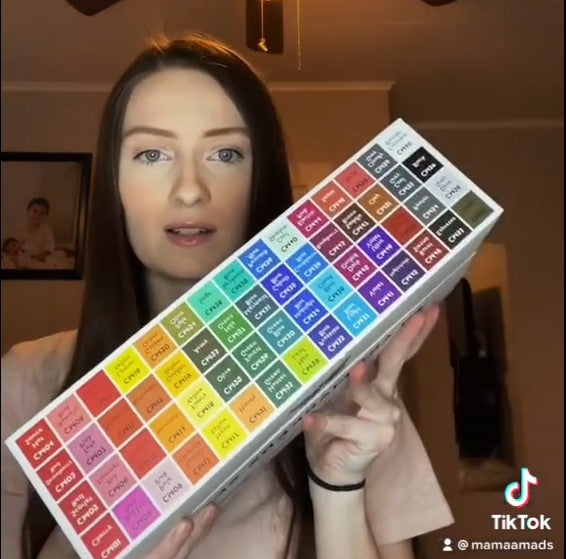
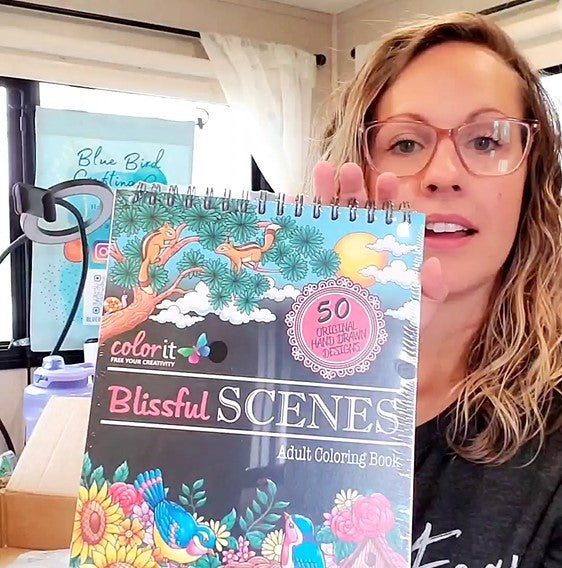
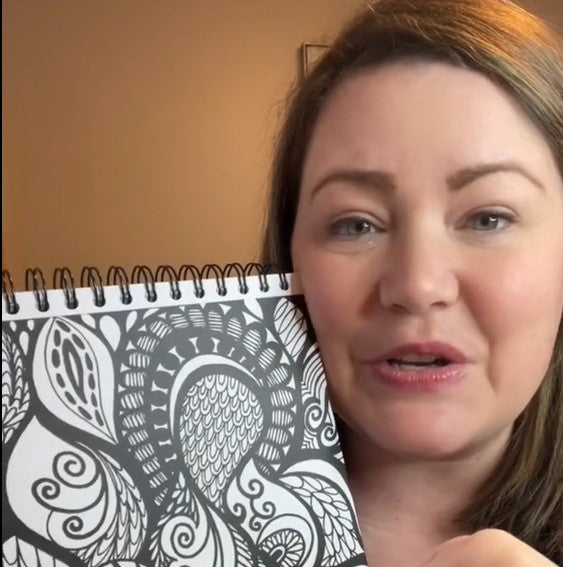



This works for managing disagreements among young and old .There is just a needed Zen of calmness both parties
When will this end? Pay not till end of month. Thank You all. You are Great company.
This was Truely an amazing article! I have PTSD and I love to color to relax and be able to sleep.